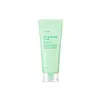What's inside
What's inside
 Key Ingredients
Key Ingredients

 Benefits
Benefits

 Concerns
Concerns

No concerns
 Ingredients Side-by-side
Ingredients Side-by-side

Water
Skin ConditioningGlycerin
HumectantSorbitol
HumectantGlycereth-26
HumectantCucumis Sativus Fruit Extract
EmollientCarbomer
Emulsion StabilisingArginine
MaskingAloe Barbadensis Extract
Skin ConditioningPropylene Glycol
HumectantChrysanthellum Indicum Extract
Skin ConditioningPhenoxyethanol
PreservativeMentha Arvensis Leaf Extract
MaskingPelargonium Graveolens Extract
MaskingAllantoin
Skin ConditioningPortulaca Oleracea Extract
Skin ConditioningCaprylyl Glycol
EmollientChlorphenesin
Antimicrobial1,2-Hexanediol
Skin ConditioningCaprylhydroxamic Acid
Sophora Angustifolia Root Extract
Skin ConditioningButylene Glycol
HumectantStyrene/Acrylates Copolymer
Ethylhexylglycerin
Skin ConditioningHyaluronic Acid
HumectantHydroxyacetophenone
AntioxidantCI 19140
Cosmetic ColorantCI 77007
Cosmetic ColorantWater, Glycerin, Sorbitol, Glycereth-26, Cucumis Sativus Fruit Extract, Carbomer, Arginine, Aloe Barbadensis Extract, Propylene Glycol, Chrysanthellum Indicum Extract, Phenoxyethanol, Mentha Arvensis Leaf Extract, Pelargonium Graveolens Extract, Allantoin, Portulaca Oleracea Extract, Caprylyl Glycol, Chlorphenesin, 1,2-Hexanediol, Caprylhydroxamic Acid, Sophora Angustifolia Root Extract, Butylene Glycol, Styrene/Acrylates Copolymer, Ethylhexylglycerin, Hyaluronic Acid, Hydroxyacetophenone, CI 19140, CI 77007
Ingredients Explained
These ingredients are found in both products.
Ingredients higher up in an ingredient list are typically present in a larger amount.
1,2-Hexanediol is a synthetic liquid and another multi-functional powerhouse.
It is a:
- Humectant, drawing moisture into the skin
- Emollient, helping to soften skin
- Solvent, dispersing and stabilizing formulas
- Preservative booster, enhancing the antimicrobial activity of other preservatives
Allantoin is a soothing ingredient known for its protective and moisturizingg properties. Because of this, it is often added to products with strong active ingredients.
Studies show higher concentrations of this ingredient can promote wound healing.
Though it can be derived from the comfrey plant, allantoin is produced synthetically for cosmetic products to ensure purity.
Learn more about AllantoinArginine is an amino acid that is important for human development. Your body uses is it to produce hair keratin and skin collagen.
As a cosmetic ingredient, Arginine has antioxidant properties and can also help repair damaged skin. This ingredient is derived either synthetically or from animals.
Arginine isn't fungal acne safe when used in the presence of other lipids (fats, fatty acids, oils, esters, etc). Oils and fats occur naturally within the skin, so take caution when using Arginine if you're prone to fungal acne.
Learn more about ArginineButylene Glycol (or BG) is used within cosmetic products for a few different reasons:
Overall, Butylene Glycol is a safe and well-rounded ingredient that works well with other ingredients.
Though this ingredient works well with most skin types, some people with sensitive skin may experience a reaction such as allergic rashes, closed comedones, or itchiness.
Learn more about Butylene GlycolCarbomer is a polymer of acrylic acid. Its main role is to create a gel consistency.
A high amount of carbomer can cause pilling or balling up of products. Don't worry, most products contain 1% or less of carbomer.
Ethylhexylglycerin (we can't pronounce this either) is commonly used as a preservative and skin softener. It is derived from glyceryl.
You might see Ethylhexylglycerin often paired with other preservatives such as phenoxyethanol. Ethylhexylglycerin has been found to increase the effectiveness of these other preservatives.
Glycerin is already naturally found in your skin. It helps moisturize and protect your skin.
A study from 2016 found glycerin to be more effective as a humectant than AHAs and hyaluronic acid.
As a humectant, it helps the skin stay hydrated by pulling moisture to your skin. The low molecular weight of glycerin allows it to pull moisture into the deeper layers of your skin.
Hydrated skin improves your skin barrier; Your skin barrier helps protect against irritants and bacteria.
Glycerin has also been found to have antimicrobial and antiviral properties. Due to these properties, glycerin is often used in wound and burn treatments.
In cosmetics, glycerin is usually derived from plants such as soybean or palm. However, it can also be sourced from animals, such as tallow or animal fat.
This ingredient is organic, colorless, odorless, and non-toxic.
Glycerin is the name for this ingredient in American English. British English uses Glycerol/Glycerine.
Learn more about GlycerinWater. It's the most common cosmetic ingredient of all. You'll usually see it at the top of ingredient lists, meaning that it makes up the largest part of the product.
So why is it so popular? Water most often acts as a solvent - this means that it helps dissolve other ingredients into the formulation.
You'll also recognize water as that liquid we all need to stay alive. If you see this, drink a glass of water. Stay hydrated!
Learn more about Water